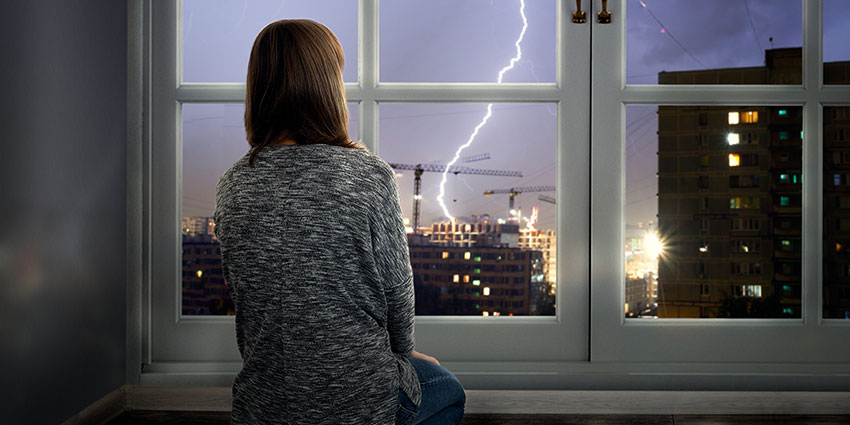Lightning Safety Tips

Quite a few homes are protected against smoke, fire and burglaries, but when it comes to lightning protection, homeowners are either uninformed or ignorant. "It won't happen to me" seems to be the general consensus, but one day it could happen.
Some storms are easy to recognize and prepare for: the gathering of dark clouds, an increase in wind, a sudden burst of rain, followed by the rumble of thunder. That's when most people hurry indoors and prepare for safety. But what if you are not at home at the time of a thunderstorm? What if you are miles away at work, or worse, out of town? Is your home and electronics protected from lightning? Don't take chances; install lightning protection and enjoy peace of mind with these lightning safety tips:
1. Unplug – The first rule of protection is to unplug your electronics before you leave your home. It may seem like a hassle, but unplugging your computer, microwave, TV, and anything else that can be unplugged is preferable to having to buy new equipment.
2. Lightning Detectors – Lightning detectors give early warning signs of a lightning storm. They can be used to protect your home by disconnecting power lines as well as providing temporary power generation.
3. Surge Protectors – Surge protectors, also known as SPDs, are plugged into your appliances such as refrigerators, dishwashers, computers and lighting devices to protect them from the surge of electricity caused by lightning. Different surge protectors give different levels of protection and different warranties. Choose a surge protector that has a light that warns when the device needs replacing.
4. Phone Protection – Your phone is also at risk of being hit during an electrical storm. The installation of a phone voltage spike will offer protection, but talking on the phone during a storm is still dangerous. Should lightning hit your phone, you could sustain injuries or even be killed.
5. Lightning Rods – Lightning rods are a somewhat old-fashioned, but still an effective way of protecting your home. A lightning rod is a metal pole that attracts lightning, thereby diverting the lightning from striking your home, nearby buildings or trees. Such lightning rods are generally placed on rooftops or in the garden.
6. Surges and Transients – Surges and transients are used to protect circuit breakers and fuses from short-circuiting. They stop lightning electricity from traveling down wires, which causes damage to your electrical equipment. Surges and transients should be used along with lightning rods, grounding systems or other lightning protection.
7. Trees – You might not like it, but cutting down tall trees around your home is recommended protection from lightning. A tall tree can attract lightning, causing it to crash onto your roof or in windows. If the tree is free of leaves and quite dry, the lightning can set it on fire, increasing the risk to your home.
Whether you need it or not, investing in lightning protection is a smart choice.
This information is provided for your convenience and is not intended as insurance advice. The views, opinions, and advice expressed in this article do not represent those of Homesite Group Incorporated. Please consult your insurance carrier or agent for information regarding your policy or coverages.
